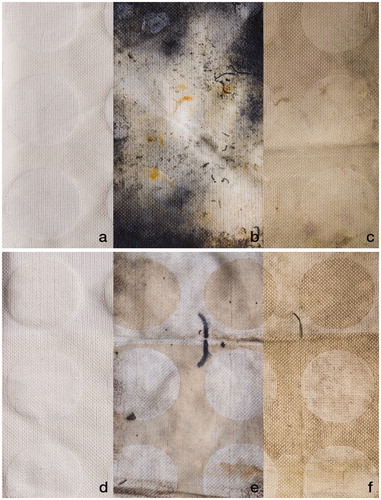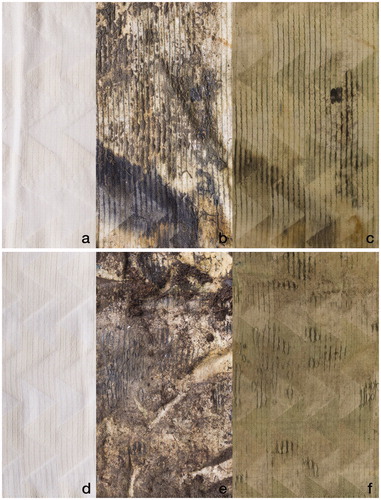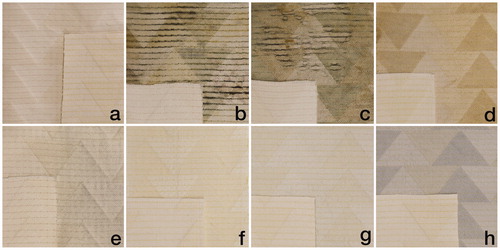Figures & data
Figure 1 Irreversible and reversible changes in textiles. (a and b) Hanna Landin’s, Anna Persson’s and Linda Worbin’s work “the Burning Tablecloth”, a tablecloth that reacts to incoming phone calls by burn marks, explores a non-chemical burnout technique as an alternative way of presenting information (photos: Linda Worbin). (c) Marjan Kooroshnia’s work explores the design properties of heat reactive, color changing thermochromic inks to create dynamic surface patterns in textiles (photo: Jan Berg and Marjan Kooroshnia).
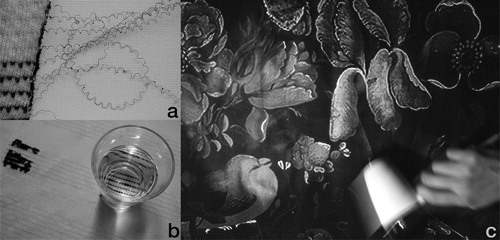
Table 1 An overview of the experiments with the left hand column indicating the type of weave pattern and materials used (marked from A to K), and top column indicating the treatment of the material (numbered from 1 to 14). Several of the experiments combine multiple materials in one treatment, and are referred to with one number, and several letters (e.g. an apron (5) combining plain satin in thin paper and cotton (B), and triangle patterned fabric (J) is referred to as B5–J5).
Figure 2 Various changes in expression. (a, b, and c) prototypes before and after use. (d, e, f, and g) plain samples after 2 months underwater and buried underground. (h) different color schemes placed in opposition to each other in the triangle pattern after two different treatments.
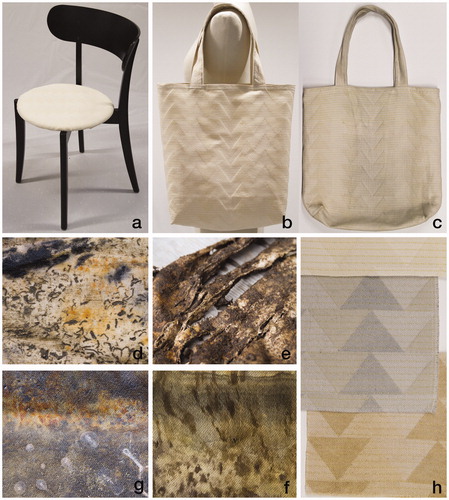
Figure 3 The differing expressions of the same section of the buried circle pattern. Before (a), after two months underwater, unwashed (b), and washed (c). Before (d), after two months underground, unwashed (e), and washed (f). The paper yarn in the buried sample was dyed brown, while the underwater sample was not.
